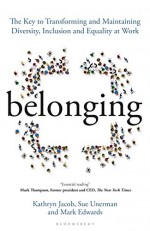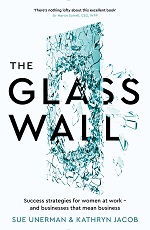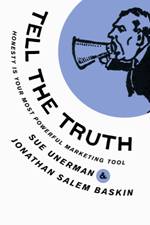We’re all enormously influenced by the stories we heard as children, even as adults. Psychological theory states that we are, perhaps, more influenced by the stories that we have forgotten, than the ones that we remember; more in thrall to our unconscious, the stories from our very earliest years, than from the myths and tales that we can remember and perhaps discount.
In 2010 there was an increase in girls under the age of 10 being taken to hospital for salmonella after the release of the film The Princess and The Frog led to children kissing frogs in the USA.
(Not only did the children get ill from this incident, there were absolutely no princes reported.)
The old story tells of the transformation of a frog into a prince as the kiss of the princess undoes the curse of a wicked witch. The children who became sick would have learnt a lesson about transformation that will useful in later life. There are no guarantees, there is little certainty. Your best efforts might deliver a prince. Probably they may only deliver a slightly moist frog.
Every business is undergoing disruption. Even the disruptors from the last two decades now fear disruption. It is crucial to have a transformation programme that gets ahead of the consequences of change – change in consumers, tech and competition.
Consumers’ expectations keep growing, so it isn’t possible to stick with traditional practices. Jeff Bezos famously says that Amazon’s role is to serve the beautifully dissatisfied customer. Everyone’s expectation of customer service is now as high as their best ever customer service experience. Even if it is in a different sector. Can your business transform and give the customer more than they currently expect before someone else does?
Business models that have relied on heritage revenue that has been in decline need to embrace trying new models of growing their income. Relying on cuts to protect the bottom line is short term. Every business needs a transformation workstream that looks for and commits to innovation for growth.
Media habits are continuing to change quickly, and the norms for the under 25s are vastly different to their elders as the new IPA Touchpoints survey illustrates. It is not enough to hope that change will stabilize. Media planning must protect the brand’s saliency amongst this cohort for the future.
With transformation comes some uncertainty. More than some people want to have to deal with. It means trying out new things before you know the outcomes. Being agile and flexible in the business plan. This can be hard, especially for those who don’t like change.
One way to deal with this discomfort is to understand that some of the desire for a certain happy ending comes from our childhood influences. Everyone is influenced by the stories that they heard as children. In “The Loudest Duck, moving beyond diversity while embracing differences” Laura Liswood explains that many of our deepest beliefs come from early years, and from our families. She suggests that a time comes however when we all need to “tell grandmother to go home”.
We all take our unconscious selves to the workplace, bringing beliefs, perceptions, understandings, misunderstandings and importantly archetypes, or indeed stereotypes, of other people, based often on very deep rooted, even ancient, understandings picked up from our parents and grandparents. So there remains an expectation that if we kiss the frog it will transform into a prince. That a bloke on a white horse will ride up and slay the dragon. That whatever the difficulties, it will all end happily ever after. That the superhero will win the day and make right what is wrong.
Transformation isn’t this simple. Change is necessary. It can be clear what we need to change from. The specific outcomes that you will get are sometimes less clear. If you’re waiting to press go on transformation until you have the from/to nailed then you will probably be waiting while your competition over takes you and a disrupter takes your business model from under you. Life isn’t like fairy tales and childhood myths.




Why I have not blogged about IWD this year. (It isn’t because of Covid19)
Tuesday, March 31st, 2020International Women’s Day is a very important milestone in the year. And this year the executive director of the United Nations Executive Director Phumzile Mlambo-Ngcuka has said that this is a massive year for gender equality.
On the days around the official date I am reminded of the issues that women face worldwide. That for many women in the world problems about equality in business are very low on the scale of their worries. Millions of girls worldwide do not have the equal right to education. Many women do not have the right to work outside the home. And violence against women and girls is one of the slowest of the UN’s Millennial goals in terms of progress. It affects one in three women worldwide.
Violence against women and girls of course is also a problem in the so called first world, in the “WEIRD” nations (Western, Educated, Internet enabled, Rich and Democratic), everywhere in the UK, possibly affecting someone you work with.
When we talk about gender inequality at work, we usually don’t mean violence. And that is good, but the unrelenting prevalence of violence outside the workplace highlights how much there still is to do for women and girls to feel safe.
According to government statistics in the UK, 1 in 4 women will experience domestic abuse and 1 in 5 sexual assault during her lifetime.
The Crime Survey of England and Wales estimates 20% of women and 4% of men have experienced some type of sexual assault since the age of 16, equivalent to an estimated 3.4 million female victims and 631,000 male victims. An estimated 3.1% of women (510,000) and 0.8% of men (138,000) aged 16-59 experienced sexual assault in the last year.
So the first reason that I am not writing about equality for women in the workplace this IWD is because I think it is important to highlight that we should be thinking beyond the inequalities of the workplace.
The second reason is inclusiveness.
Much of the publicity that is generated at this time of year is focused on what men are still getting wrong at work. There’s new, and undoubtedly valuable research into what men and women find acceptable at work from King’s College London. Headlines include the finding that one in ten men think that it is OK to display material of a sexual nature at work. Hideous. These headlines will make many good men shudder with the association and indeed feel either guilty on behalf of men they haven’t even met or condemned by their gender.
For my next book I (and my co-authors) have been interviewing lots of them. They refer frequently to feeling as though there’s a “witch hunt” or that being a straight white man is being part of an endangered species. (It’s worth pointing out that there isn’t and it isn’t of course. The victims of the actual witch hunts were those who didn’t fit contemporary gender norms and often were middle aged women who wouldn’t conform).
Whilst some of you might not have much sympathy for those who can be characterised as “male, pale and stale”, or a “diversity disaster zone” (as the awesome Richard Huntingdon puts it), there are many men in the workplace who might look like they’re riding high but in fact are not.
There are many who feel displaced or who don’t fit or don’t approve of patriarchal masculine norms. The under 25s, those from disadvantaged backgrounds, BAME, GBTQ+, with disabilities, with neurodiversity, with mental health issues. Feminists of every gender.
The final reason for not blogging on IWD is that there were a multitude of great points of view including this one from Shelly Zalis on the role men can play in driving equality in the workplace.
his is not a time for more divisions, for finger pointing. It is a time for inclusiveness.
IWD’s theme this year is each for equal. It should, and must go both ways, indeed every, way.
Posted in MediaComment | No Comments »